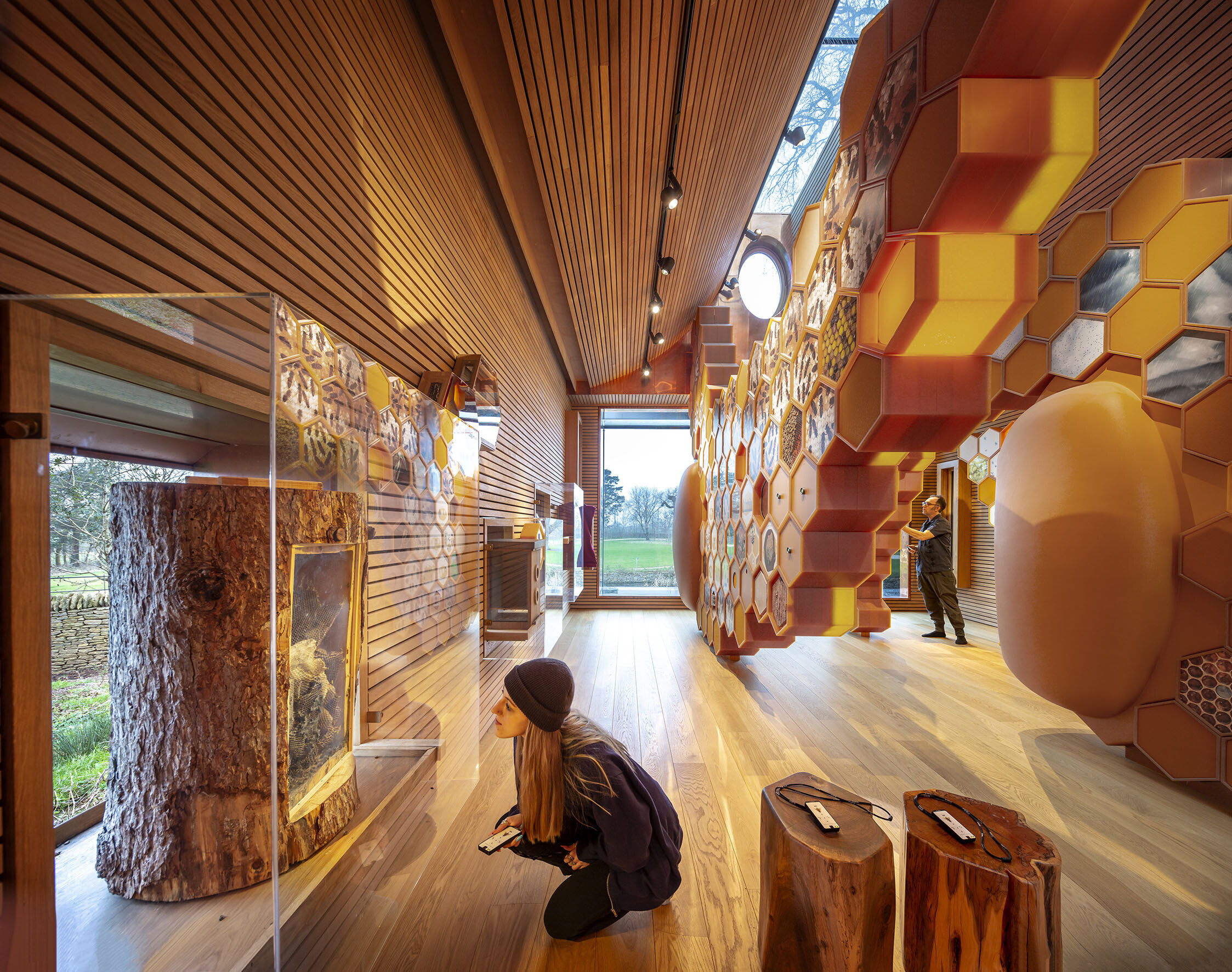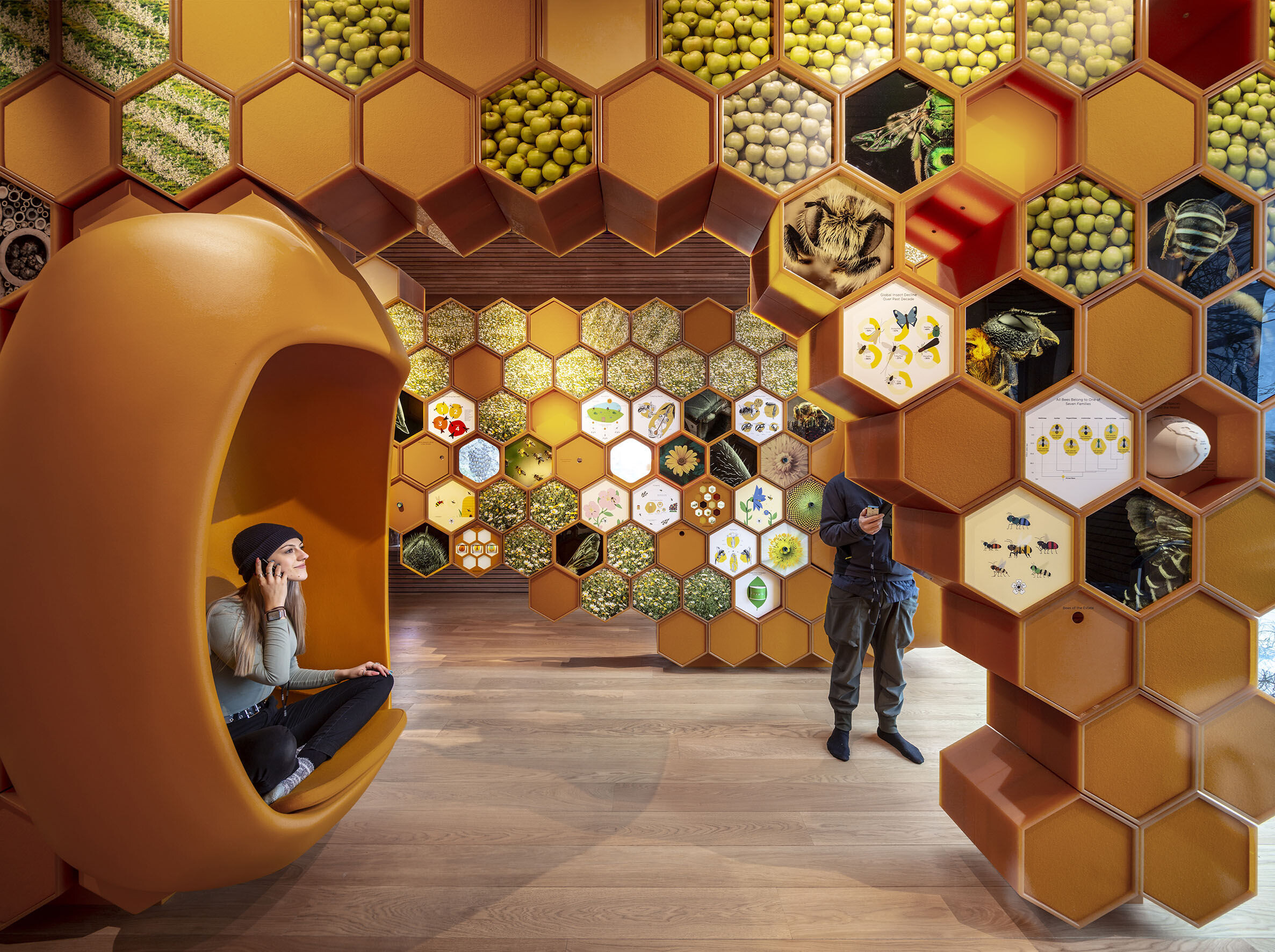What appears as a small, wooden building on the outside transforms into a thriving beehive on the inside through integrated architecture and scenography. Gigantic honeycombs made from a material mimicking wax split the interior into different sections. Two large cells resemble a queen larva’s gestation cell. In these cells, you can lounge, listen to stories, and consider new perspectives about nature and its preservation as your knowledge expands.
Supper organism
In contrast with our individualistic society, the honeybees’ world depends on collectivity. Individual bees fulfil the same role as collaborating cells in a human’s body: the colony is a super organism. Much in the same way, the information embedded in each of the hexagons in the museum’s honeycombs contribute to the larger story. In each hexagon, you can tap into the bees’ hive mind by opening drawers or doors, peeking through peep holes, looking at infographics and animations and playing games.

From micro to macro
You initially familiarise yourself with the bees at the smallest level of detail and zoom out as you make your way through the exhibition. You encounter their anatomical details, the way in which bees communicate and how bees interact with their environment. The visit ends by exploring the relationship between bees and humans. You discover, for example, that while we rely on bees for our food production, we also use pesticides and stimulate monocultures to produce food, threatening their very existence.
People love bees
People have always been fascinated by honeybees and have tried to control them. Bees and their honey have inspired people throughout the ages – whether for the magical healing qualities of their honey, their working ethos or their way of cohabitating. You can also learn about how humans live alongside bees and the history of beekeeping. Here, you can discover poems and music about bees as well as malpractices in the honey industry.

What it feels like to be a bee
The scenography utilises all five senses. Some hexagons are filled with real bees’ wax and smell like a beehive. You can put your hand in another and feel the temperature at which bees regulate in their hives – nice and warm! In the observation hives, you can meet the bees of the estate, listen to them and watch how they organise their lives in the hive. During the summer, the colony is at its largest and you will find the bees processing nectar into honey and nourishing larvae into new bees. In the winter, only a small group of bees remains. They live off the honey production from the summer while keeping the queen warm.
Meet the beekeeper
In the audio guide, the beekeeper of the estate Paula Carnell introduces you to her bees. The audio guide was not scripted. Instead, Paula shares spontaneous stories addressed to the visitor. It’s as if you are part of one of her bee safari’s that she often takes visitors on. These stories also shift in scale from small to large. From the activities in the hive and the division of labour within the colony, to the significant problems that threaten bees and what you can do to help them.






















